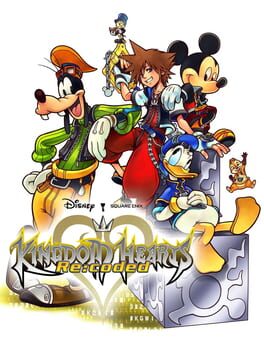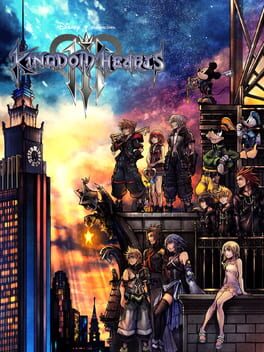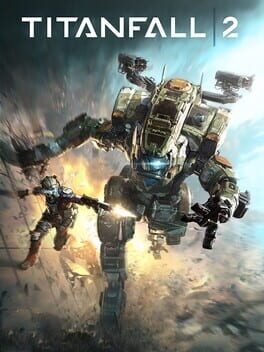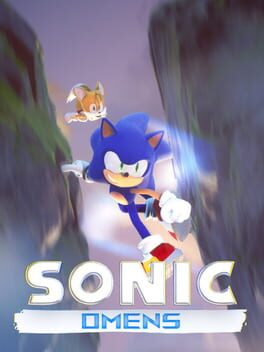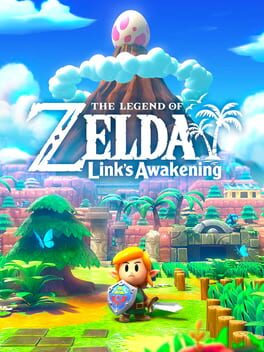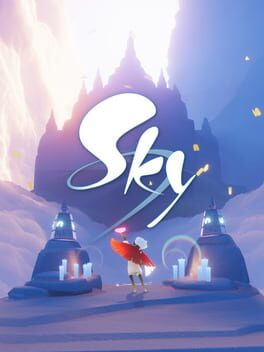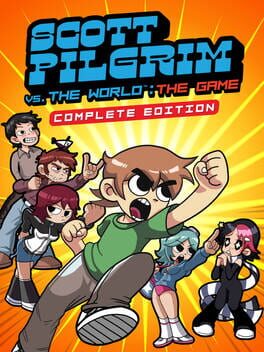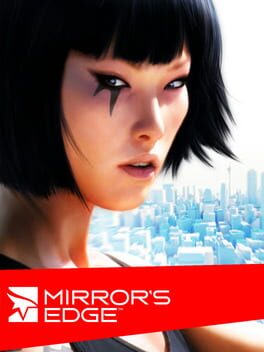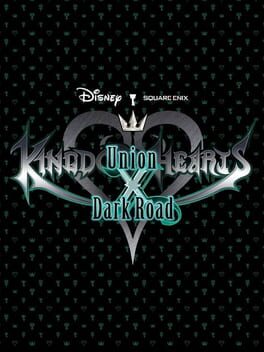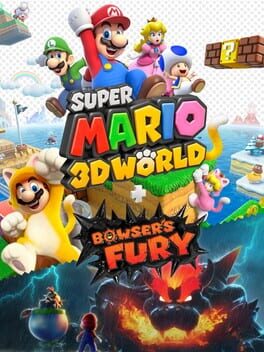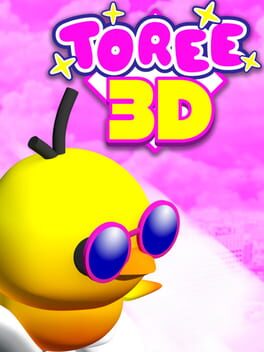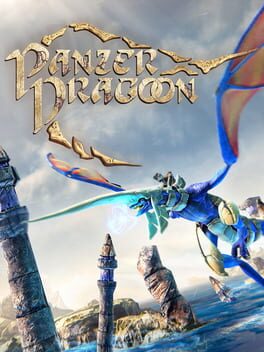Lozicle
Kingdom Hearts Re:coded is a cluttered desktop.
Whenever people would say "nothing happens in Re:coded, but the game's still fun," I thought they were being dismissive. It turns out that's actually the best description of the game.
My favorite part is the stat matrix, which is basically the sphere grid, but it also handles gameplay changes. Wanna change the difficulty? Wanna gain CP instead of EXP? All handled right there. It offers a lot of customization while reinforcing the computer theme. The game also offers choice in the System Sectors. Each floor has a challenge, and you place a bet on if you can beat that challenge. If you want all the prizes at the end, you gotta go all in, so you can either play it safe and attempt the Sector multiple times or git gud. The Sectors do kinda feel like being sent to the budget dimension, but I appreciate having a dedicated space for more dynamic challenges. I will say though, the platforming and camera work for what the DS can do, but it was never really that fun. Auto-jumping was weird, but it never screwed me over or anything.
The combat was also enjoyable. Commands can be used to cancel regular attacks, and it's never not satisfying to go from a full combo to a thundaga into another combo. The fact that a couple of the keyblades have unique combos is icing on the cake.
It's a shame then that the combat doesn't get the attention it deserves. So much of this game is full of random mini-games. 2D sidescrolling, stealth (thankfully not all of Wonderland was this), Space Harrier, turn-based combat, chasing Iago (under a time limit!), not having a keyblade at all (tho relying on Donald and Goofy was neat). The developers made a great combat system, and then don't let me use it! Thankfully I can just replay the few boss fights that were actually great, like Dark Riku, Heartless Sora, and Roxas.
As for the story, I think it can be summed up by the moment where Data Sora defeats Sora's Heartless, everyone says their goodbyes, resolution is achieved, and then Goofy says "hey wait, that didn't have anything to do with the inciting incident," and the game goes for another two hours. Amazing.
Whenever people would say "nothing happens in Re:coded, but the game's still fun," I thought they were being dismissive. It turns out that's actually the best description of the game.
My favorite part is the stat matrix, which is basically the sphere grid, but it also handles gameplay changes. Wanna change the difficulty? Wanna gain CP instead of EXP? All handled right there. It offers a lot of customization while reinforcing the computer theme. The game also offers choice in the System Sectors. Each floor has a challenge, and you place a bet on if you can beat that challenge. If you want all the prizes at the end, you gotta go all in, so you can either play it safe and attempt the Sector multiple times or git gud. The Sectors do kinda feel like being sent to the budget dimension, but I appreciate having a dedicated space for more dynamic challenges. I will say though, the platforming and camera work for what the DS can do, but it was never really that fun. Auto-jumping was weird, but it never screwed me over or anything.
The combat was also enjoyable. Commands can be used to cancel regular attacks, and it's never not satisfying to go from a full combo to a thundaga into another combo. The fact that a couple of the keyblades have unique combos is icing on the cake.
It's a shame then that the combat doesn't get the attention it deserves. So much of this game is full of random mini-games. 2D sidescrolling, stealth (thankfully not all of Wonderland was this), Space Harrier, turn-based combat, chasing Iago (under a time limit!), not having a keyblade at all (tho relying on Donald and Goofy was neat). The developers made a great combat system, and then don't let me use it! Thankfully I can just replay the few boss fights that were actually great, like Dark Riku, Heartless Sora, and Roxas.
As for the story, I think it can be summed up by the moment where Data Sora defeats Sora's Heartless, everyone says their goodbyes, resolution is achieved, and then Goofy says "hey wait, that didn't have anything to do with the inciting incident," and the game goes for another two hours. Amazing.
2019
I’m not sure how to write this without it taking a million paragraphs. I guess to sum it up, it’s a bloated mess of a game with too many ideas and obligations to fulfill that it becomes a burden on itself, yet it leaves me with a good feeling about the future of the series.
The game has to fit in so much. It has to show the Disney worlds (ranking from best to worst: Tangled, Monsters Inc., Toy Story, Hercules, Big Hero 6, Pirates, Frozen). It has to wrap up the plot of the last 17 years of Kingdom Hearts games. It has to hint at where the story is going next. I’d say it does all these individual things well, but the fact that it’s doing all these things makes the game feel way too full. If you're just playing for one of these parts, you're gonna loathe the rest of them.
The cutscenes take forever, and aside from the occasional funny line or dramatic character beat, they’re presented in the most boring way imaginable. I think I’d prefer a lot of them be presented how games like Genshin Impact or NieR Automata present their less dynamic scenes, as just voice-acted text boxes (preferably with the player able to move the camera around). Some of the audio also sounds really low-quality, particularly voices during the Re:Mind segments. This was pre-pandemic, so I’m not sure what the excuse is.
Maybe the cutscenes feel like a drag because the gameplay is so fun. The combos feel like they’re worth a damn without the magic having to get nerfed (especially post-update). The flowmotion got nerfed, but now Sora can run up some walls, which feels like a fair compromise. Team attacks make Donald and Goofy feel like actual partners. Shotlocks and air-step allow big areas to handle one-on-one fights. There are some things I prefer about KH2’s combat (Sora’s weight and getting to decide for myself when to use forms, for example). Also, while I enjoy the large mob fights, I do wish there were more one-on-one fights like Dark Inferno. Even most of the climax is big team brawls. Limit Cut adds a lot more one-on-one stuff, and they’re incredible (albeit maybe too hard). The improved combat (compared to previous Osaka team games) and the setups for future storylines that make me excited for KH4 or whatever happens next.
Oh yeah, and the PC port is really good. Good framerate, easy to access save files, and a smart keyboard layout (KH always felt like the controller couldn’t handle everything it wanted to do). I’m excited to see the mods for this, and I hope future KH and Square Enix games get PC releases too.
Also apparently this was the 13th game I beat in 2021? Huh. Neat!
The game has to fit in so much. It has to show the Disney worlds (ranking from best to worst: Tangled, Monsters Inc., Toy Story, Hercules, Big Hero 6, Pirates, Frozen). It has to wrap up the plot of the last 17 years of Kingdom Hearts games. It has to hint at where the story is going next. I’d say it does all these individual things well, but the fact that it’s doing all these things makes the game feel way too full. If you're just playing for one of these parts, you're gonna loathe the rest of them.
The cutscenes take forever, and aside from the occasional funny line or dramatic character beat, they’re presented in the most boring way imaginable. I think I’d prefer a lot of them be presented how games like Genshin Impact or NieR Automata present their less dynamic scenes, as just voice-acted text boxes (preferably with the player able to move the camera around). Some of the audio also sounds really low-quality, particularly voices during the Re:Mind segments. This was pre-pandemic, so I’m not sure what the excuse is.
Maybe the cutscenes feel like a drag because the gameplay is so fun. The combos feel like they’re worth a damn without the magic having to get nerfed (especially post-update). The flowmotion got nerfed, but now Sora can run up some walls, which feels like a fair compromise. Team attacks make Donald and Goofy feel like actual partners. Shotlocks and air-step allow big areas to handle one-on-one fights. There are some things I prefer about KH2’s combat (Sora’s weight and getting to decide for myself when to use forms, for example). Also, while I enjoy the large mob fights, I do wish there were more one-on-one fights like Dark Inferno. Even most of the climax is big team brawls. Limit Cut adds a lot more one-on-one stuff, and they’re incredible (albeit maybe too hard). The improved combat (compared to previous Osaka team games) and the setups for future storylines that make me excited for KH4 or whatever happens next.
Oh yeah, and the PC port is really good. Good framerate, easy to access save files, and a smart keyboard layout (KH always felt like the controller couldn’t handle everything it wanted to do). I’m excited to see the mods for this, and I hope future KH and Square Enix games get PC releases too.
Also apparently this was the 13th game I beat in 2021? Huh. Neat!
2016
I haven't played the multiplayer, but man, that was one video games as hell campaign! That was up there with VALVe games in terms of quality campaign, even disregarding them using the Source engine (which they made look great btw).
The relationship between BT and Cooper was fun (I remember their names! That just shows how much I like them). I like how the game let me choose what to say during each conversation, giving me some creative control on what kind of player character Cooper is. I also appreciate Cooper keeping quiet during pretty much all other times, so I never got tired of him (his silence could seem weird to someone picking the snarky options everytime he talks. Oh well).
I knew I would enjoy playing as the Pilot, with the wallrunning and sliding being fun to string together (and allowing for interesting platforming for a shooter), but add the temporary cloak ability I didn't even know about, and suddently stealth fits right in with this action game. And the environments you platform in are all distinct, with unique mechanics and visuals. I might forget a place or two, but I'm not going to confuse them for each other. I thought being the Titan would be less fun, but the shear power you have when in the Titan makes it feel like a fair trade-off. Even then, it has a slide-boost move that makes it feel like... idk, gotta ask mecha-game fans if they like Titanfall 2.
My only gripe is that the ending doesn't feel very conclusive. The final platform sequence is cool, but the final boss wasn't the guy we were made to hate through the whole game. It's not exactly a cliffhanger, but it does feel like there's still unfinished business. For now, I just have to hope that, someday, Titanfall 3 drops.
The relationship between BT and Cooper was fun (I remember their names! That just shows how much I like them). I like how the game let me choose what to say during each conversation, giving me some creative control on what kind of player character Cooper is. I also appreciate Cooper keeping quiet during pretty much all other times, so I never got tired of him (his silence could seem weird to someone picking the snarky options everytime he talks. Oh well).
I knew I would enjoy playing as the Pilot, with the wallrunning and sliding being fun to string together (and allowing for interesting platforming for a shooter), but add the temporary cloak ability I didn't even know about, and suddently stealth fits right in with this action game. And the environments you platform in are all distinct, with unique mechanics and visuals. I might forget a place or two, but I'm not going to confuse them for each other. I thought being the Titan would be less fun, but the shear power you have when in the Titan makes it feel like a fair trade-off. Even then, it has a slide-boost move that makes it feel like... idk, gotta ask mecha-game fans if they like Titanfall 2.
My only gripe is that the ending doesn't feel very conclusive. The final platform sequence is cool, but the final boss wasn't the guy we were made to hate through the whole game. It's not exactly a cliffhanger, but it does feel like there's still unfinished business. For now, I just have to hope that, someday, Titanfall 3 drops.
2021
Boy, this demo is rough. The opening levels have some promise, and I actually enjoyed learning to S-Rank Area 99, but things immediately nose-dive with Wild Ridge and never really improve after that. Wild Ridge fails because of awkward plane controls and overly-punishing obstacles, and White Jungle is a round hole that the developer is trying to shove the square peg that is the Infinity Engine into. The levels after that moreso suffer from poor conveyance of direction and pacing. Exploring can get me lost, and trying to go fast can get me killed.
The game is still in development though, so could it improve? I don't know. It looks like they're only making the later levels now, and seeing their ideas for how to make Sonic levels more difficult doesn't fill me with hope.
Edit: The final game is out. It did not improve.
The game is still in development though, so could it improve? I don't know. It looks like they're only making the later levels now, and seeing their ideas for how to make Sonic levels more difficult doesn't fill me with hope.
Edit: The final game is out. It did not improve.
A beautiful remake of a great original. Having dedicated buttons for the sword, shield, and boots, and a context sensitive power glove make it really hard to every play the original again. Having a map that displays acquired heart pieces and shells, as well as memories to remind me of where to go are very helpful too.
The one big detractor was the dungeon builder, which is just kind of a drag. The maker works fine, and it can be fun putting dungeons together, but having to then go through the dungeons myself feels like putting together a puzzle I figured out 30 minutes ago. Wouldn't be so bad if it was just a side thing for sharing dungeons with friends with the amiibo (or, ideally, online), but heart pieces, a shell, and a bottle were tied to it. This mode is not suited for loners.
Also, I wish I could move with the d-pad. I'm already sad that the movement is locked to eight directions instead of being full analog like in A Link Between Worlds, but maybe analog control would have broken the level design. The real problem is that I can only move with the analog stick, which is prone to drifting. Either letting me move with the d-pad or letting me use a singular joycon on its own (the one I have that doesn't drift) would have solved the issue. On a totally unrelated note, the GameCube controller works really well with this game.
Other than those couple problems, I loved this game. Maybe someday I'll revisit it to try hard mode.
The one big detractor was the dungeon builder, which is just kind of a drag. The maker works fine, and it can be fun putting dungeons together, but having to then go through the dungeons myself feels like putting together a puzzle I figured out 30 minutes ago. Wouldn't be so bad if it was just a side thing for sharing dungeons with friends with the amiibo (or, ideally, online), but heart pieces, a shell, and a bottle were tied to it. This mode is not suited for loners.
Also, I wish I could move with the d-pad. I'm already sad that the movement is locked to eight directions instead of being full analog like in A Link Between Worlds, but maybe analog control would have broken the level design. The real problem is that I can only move with the analog stick, which is prone to drifting. Either letting me move with the d-pad or letting me use a singular joycon on its own (the one I have that doesn't drift) would have solved the issue. On a totally unrelated note, the GameCube controller works really well with this game.
Other than those couple problems, I loved this game. Maybe someday I'll revisit it to try hard mode.
A shockingly good story for a Pokemon game thanks to its lovable cast, imaginative setting, and literally wonderful tone.
The dungeons start off simple, but they later get more complex with tougher combinations of enemy Pokemon that keep them engaging. Grinding can help, but intelligent resource management and planning can overcome the challenges just as well (my sister told me I was really under-leveled by endgame, and I still got through just fine).
This does cause the pre-mission management to be somewhat tedious though, like a checklist that needs to be done before the fun can begin proper. As charming as all the characters are, watching Spinda shake up my juice can get pretty old, just as an example.
Overall, a charming game that Pokemon and dungeon-crawler fans should try.
The dungeons start off simple, but they later get more complex with tougher combinations of enemy Pokemon that keep them engaging. Grinding can help, but intelligent resource management and planning can overcome the challenges just as well (my sister told me I was really under-leveled by endgame, and I still got through just fine).
This does cause the pre-mission management to be somewhat tedious though, like a checklist that needs to be done before the fun can begin proper. As charming as all the characters are, watching Spinda shake up my juice can get pretty old, just as an example.
Overall, a charming game that Pokemon and dungeon-crawler fans should try.
2012
Not so much an "emotion experience" as it is a game that effectively facilitates players creating their own through their interactions with the environment and other players.
For example, I came across another player pretty early on, and we decided to stick together. We helped each other find our way through each set of obstacles until we reached the snowy mountain. We stayed close to each other, pushing through the wind and climbing up the cliffs. At one point, they fell from one of the cliffs, far enough that the trip back would take a considerable amount of time. I stood there for a solid minute, debating with myself on whether I should go on without them. I eventually climbed back down to accompany them. Later, they fell from a different cliff, completely out of sight this time. I stood there for about five minutes calling out to them. The snow storm was so dense and loud that I'm not sure I would have been able to tell if they were coming back. Eventually, I had to move on without them. Reaching the top of the mountain was bittersweet.
For example, I came across another player pretty early on, and we decided to stick together. We helped each other find our way through each set of obstacles until we reached the snowy mountain. We stayed close to each other, pushing through the wind and climbing up the cliffs. At one point, they fell from one of the cliffs, far enough that the trip back would take a considerable amount of time. I stood there for a solid minute, debating with myself on whether I should go on without them. I eventually climbed back down to accompany them. Later, they fell from a different cliff, completely out of sight this time. I stood there for about five minutes calling out to them. The snow storm was so dense and loud that I'm not sure I would have been able to tell if they were coming back. Eventually, I had to move on without them. Reaching the top of the mountain was bittersweet.
This is just free-to-play, grindy Journey. Still absolutely beautiful, but playing both reveals just how derivative Sky is of its older sibling.
I played Sky first, and it's like Thatgamecompany knew I hadn't played Journey yet, so they just made a version of Journey that suited my tastes more. Flying through an ocean of clouds; varied, colorful environments; available on a device I own; character customization; free.
Those last two parts contribute to my one problem with Sky though. Getting parts to customize my character with requires getting flames from candle sticks. They respawn every day, so this encourages playing the game every single day or paying money to get them right away. I prefer staying a free player, and I don't think this game benefits from frequent revisits. Thankfully, the game has received updates over time that add new content. Those at least warrant revisits.
It's a shame then that I ended up replaying Sky's main story by way of Journey's PC release. Maybe that's unfair. They aren't exactly the same, but the way both games present their stories are so similar, it's impossible not to draw comparisons. Start from the bottom and work your way upward; encounter other travelers and potentially make friends; hide from scary, flying monsters; ascend. Sky has its own things it's doing differently, but it still feels like a retread.
Sky is still a game that everyone should try (it is free), but I don't respect it like I do Journey.
I played Sky first, and it's like Thatgamecompany knew I hadn't played Journey yet, so they just made a version of Journey that suited my tastes more. Flying through an ocean of clouds; varied, colorful environments; available on a device I own; character customization; free.
Those last two parts contribute to my one problem with Sky though. Getting parts to customize my character with requires getting flames from candle sticks. They respawn every day, so this encourages playing the game every single day or paying money to get them right away. I prefer staying a free player, and I don't think this game benefits from frequent revisits. Thankfully, the game has received updates over time that add new content. Those at least warrant revisits.
It's a shame then that I ended up replaying Sky's main story by way of Journey's PC release. Maybe that's unfair. They aren't exactly the same, but the way both games present their stories are so similar, it's impossible not to draw comparisons. Start from the bottom and work your way upward; encounter other travelers and potentially make friends; hide from scary, flying monsters; ascend. Sky has its own things it's doing differently, but it still feels like a retread.
Sky is still a game that everyone should try (it is free), but I don't respect it like I do Journey.
Years ago, this game reached cult status with its frantic combat, great multiplayer, beautiful sprite animation, memorable soundtrack, and delisting from online stores. Now that it's back and I can actually play it, I get to become aware of the flaws nobody felt like telling me about apparently.
To start with something that's less of a problem and more a personal gripe, I didn't like the blocking in this game. It encouraged turtling too much while waiting for an opening, and I especially don't like enemies doing it either. It feels like enemies dictate the pacing of the combat too much. Things got better once I acquired the dodge move. Being able to reposition myself made defensive play more engaging. Parrying also feels great when I can pull it off.
It's a shame then that dodging and a lot of other moves are locked behind level progression. While this helps players learn and appreciate the moves as they get them, it means I have to work to get characters who are really fun to use. It's not bad to the extent of, say, Sonic and the Secret Rings, but a lower level-cap and more moves available at the start would have made them feel more fun more quickly. I will say, I completely understand locking grapples behind level progression, along with other guard-breaking moves.
Stat upgrades have a similar issue to level progression. Improving the characters' stats with food or items from shops is a good way to encourage players to revisit earlier stages to strengthen their character (especially if they're struggling with the current stage). It didn't stop the process from feeling like grinding though.
Every person I talk to about this game gets why the lives system sucks. I get that lives encourage consistency. The game's not going to let me struggle and flounder my way through to the credits; I have to show some level of competence. It also makes sense in the context of multiplayer, where players can revive each other and share lives. I'd be 100% fine with it if you started every level with 3 lives (or more/less depending on difficulty); however, lives carry over between levels and can only be farmed from a boss, buying overpriced items in the first level, or game overing. Needless to say this is a serious pacing killer if you enter a level with no extra lives and die midway through.
These issues are understandable, since it is a budget game made to tie in with a movie that released around the same time. Ubisoft probably rushed this game. It doesn't feel rushed in a way that it's super buggy (it's only kinda buggy), but in that issues caught in playtesting couldn't be fully addressed.
It says something then that, despite these issues, the game is still so beloved and well-remembered. And there's a reason people latched onto this game. The combat can get enjoyably hectic. Crowds of characters and enemies flood the screen. Bosses have large, flashy attacks. Up to four players, each using characters with unique special moves, can send enemies flying across the stage, coins spilling out of them as they fade away. The fact that the action still manages to be (mostly) readable is impressive.
Its readability is due to its simple, yet wonderfully animated, sprite-work. Despite the stylized proportions of the characters, their poses are clear enough to sell their attacks and reactions. And their larger heads give the characters more opportunities to show their personalities through their expressive faces.
And the game's sound. The sound effects have a satisfying, old-school level of crunch to them. The loud "KO!" shout at the end of a boss is like something out of the best fighting games. The music is brilliant blend of chip-tune and rock that suits the rest of the game so well that it feels like Anamanaguchi and Scott Pilgrim were made for each other.
This game suffered a bit from being over-hyped, as many hard-to-get games do (e.g., Sonic CD, PT, Saturn games, etc.). I'd hear clusters of fans discuss their love of the game, but the conversation never got big enough for me to hear the problems with it. I'm glad the game is widely available again, and I'm glad I got to play it myself.
To start with something that's less of a problem and more a personal gripe, I didn't like the blocking in this game. It encouraged turtling too much while waiting for an opening, and I especially don't like enemies doing it either. It feels like enemies dictate the pacing of the combat too much. Things got better once I acquired the dodge move. Being able to reposition myself made defensive play more engaging. Parrying also feels great when I can pull it off.
It's a shame then that dodging and a lot of other moves are locked behind level progression. While this helps players learn and appreciate the moves as they get them, it means I have to work to get characters who are really fun to use. It's not bad to the extent of, say, Sonic and the Secret Rings, but a lower level-cap and more moves available at the start would have made them feel more fun more quickly. I will say, I completely understand locking grapples behind level progression, along with other guard-breaking moves.
Stat upgrades have a similar issue to level progression. Improving the characters' stats with food or items from shops is a good way to encourage players to revisit earlier stages to strengthen their character (especially if they're struggling with the current stage). It didn't stop the process from feeling like grinding though.
Every person I talk to about this game gets why the lives system sucks. I get that lives encourage consistency. The game's not going to let me struggle and flounder my way through to the credits; I have to show some level of competence. It also makes sense in the context of multiplayer, where players can revive each other and share lives. I'd be 100% fine with it if you started every level with 3 lives (or more/less depending on difficulty); however, lives carry over between levels and can only be farmed from a boss, buying overpriced items in the first level, or game overing. Needless to say this is a serious pacing killer if you enter a level with no extra lives and die midway through.
These issues are understandable, since it is a budget game made to tie in with a movie that released around the same time. Ubisoft probably rushed this game. It doesn't feel rushed in a way that it's super buggy (it's only kinda buggy), but in that issues caught in playtesting couldn't be fully addressed.
It says something then that, despite these issues, the game is still so beloved and well-remembered. And there's a reason people latched onto this game. The combat can get enjoyably hectic. Crowds of characters and enemies flood the screen. Bosses have large, flashy attacks. Up to four players, each using characters with unique special moves, can send enemies flying across the stage, coins spilling out of them as they fade away. The fact that the action still manages to be (mostly) readable is impressive.
Its readability is due to its simple, yet wonderfully animated, sprite-work. Despite the stylized proportions of the characters, their poses are clear enough to sell their attacks and reactions. And their larger heads give the characters more opportunities to show their personalities through their expressive faces.
And the game's sound. The sound effects have a satisfying, old-school level of crunch to them. The loud "KO!" shout at the end of a boss is like something out of the best fighting games. The music is brilliant blend of chip-tune and rock that suits the rest of the game so well that it feels like Anamanaguchi and Scott Pilgrim were made for each other.
This game suffered a bit from being over-hyped, as many hard-to-get games do (e.g., Sonic CD, PT, Saturn games, etc.). I'd hear clusters of fans discuss their love of the game, but the conversation never got big enough for me to hear the problems with it. I'm glad the game is widely available again, and I'm glad I got to play it myself.
2008
The aesthetic is definitely the best part of the game. The stark whites contrasted by the red from the runner vision creates a distinct, appealing visual style that also aids in gameplay. But everyone talks about the visuals. Not enough is said about the music. The ambient, often somber songs go well with the world and create a nice zen-like feel for platforming. And there's the sound effects. Faith's movement is accompanied by sound effects that give her a realistic physicality I haven't felt in even modern first-person games.
And the gameplay is exhilarating once mastered. The realistic movement of Mirror's Edge mattered because it emphasized the importance of skillful play. There's no fooling around. You get good and play well or else Faith goes splat. Stringing together jumps, rolls, climbs, turns, and slides brings to life the thrill of hardcore parkour. It can make all the mistakes made along the way feel worth it.
The controls are pretty smart too. They take some time to get used to (not using A to jump felt weird), but they make complete sense. Moving, looking, and jumping are the three most important verbs in this game. The player should always have their fingers on the analog sticks and jump button. I'm sure the game plays fine on keyboard and mouse, but since precise aiming isn't as big of a factor as moving, the analog stick works fine.
Precise aiming is a factor though, and that's a problem. The combat is bad. It's supposed to be bad. Faith isn't a fighter, and she isn't supposed to feel like one. I just wish the game would stop forcing me to fight. Running away from cops works sometimes, but a lot of the time they're right in Faith's path, at which point taking them down becomes a crap-shoot. I like that aiming becomes significantly worse when Faith is holding a gun; that's pretty funny, but even melee combat is unreliable. If non-lethal take-downs were more consistent, and if direct combat happened less often, I'd be fine with it.
Sometimes the platforming can break down too. There are some levels that require the player to slow down and find the proper path forward, and that's fine. It adds some contrast with the more speed-focused parts. But even with runner's vision telling me where to go, along with a button that turns the camera toward the intended destination, I sometimes got confused about which platforms in which order would get me to the goal. Mistakes made during the fast portions could suck, but a successful run was something to behold. Climbing out of a puzzle-platforming section was usually just accompanied with a feeling of "well, that's over with."
I'm glad that other developers seemed to like Mirror's Edge. You don't have to look hard for first-person games that incorporate parkour as a tool in their run-and-gun core loop. Meanwhile, indie games like Refunct try to bring purity to the design by stripping away everything that isn't platforming. That's not to mention all the games inspired by the visuals of Mirror's Edge. We'll probably never get another realistic parkour game like Mirror's Edge, but I'm thankful for the legacy it has left behind.
And the gameplay is exhilarating once mastered. The realistic movement of Mirror's Edge mattered because it emphasized the importance of skillful play. There's no fooling around. You get good and play well or else Faith goes splat. Stringing together jumps, rolls, climbs, turns, and slides brings to life the thrill of hardcore parkour. It can make all the mistakes made along the way feel worth it.
The controls are pretty smart too. They take some time to get used to (not using A to jump felt weird), but they make complete sense. Moving, looking, and jumping are the three most important verbs in this game. The player should always have their fingers on the analog sticks and jump button. I'm sure the game plays fine on keyboard and mouse, but since precise aiming isn't as big of a factor as moving, the analog stick works fine.
Precise aiming is a factor though, and that's a problem. The combat is bad. It's supposed to be bad. Faith isn't a fighter, and she isn't supposed to feel like one. I just wish the game would stop forcing me to fight. Running away from cops works sometimes, but a lot of the time they're right in Faith's path, at which point taking them down becomes a crap-shoot. I like that aiming becomes significantly worse when Faith is holding a gun; that's pretty funny, but even melee combat is unreliable. If non-lethal take-downs were more consistent, and if direct combat happened less often, I'd be fine with it.
Sometimes the platforming can break down too. There are some levels that require the player to slow down and find the proper path forward, and that's fine. It adds some contrast with the more speed-focused parts. But even with runner's vision telling me where to go, along with a button that turns the camera toward the intended destination, I sometimes got confused about which platforms in which order would get me to the goal. Mistakes made during the fast portions could suck, but a successful run was something to behold. Climbing out of a puzzle-platforming section was usually just accompanied with a feeling of "well, that's over with."
I'm glad that other developers seemed to like Mirror's Edge. You don't have to look hard for first-person games that incorporate parkour as a tool in their run-and-gun core loop. Meanwhile, indie games like Refunct try to bring purity to the design by stripping away everything that isn't platforming. That's not to mention all the games inspired by the visuals of Mirror's Edge. We'll probably never get another realistic parkour game like Mirror's Edge, but I'm thankful for the legacy it has left behind.
This review contains spoilers
Kingdom Hearts Union χ is no longer available to play. It now only exists as an offline Theater Mode to view the story scenes, with its companion game Dark Road only being playable offline too. I’d make a joke about this being the ultimate example of exploiting FOMO (Fear Of Missing Out), but this is a fine way to experience Union χ Dark Road’s story. Anyone who wants to brush up on the story before the next arc in Kingdom Hearts can just download it now. Still, I’d like to reflect on what was lost.
I'll start by talking about Union χ's half of the gameplay, since it came first and is easily the worse of the two games. I’d been looking for a free turn-based RPG to play on mobile, so I'm glad the game went that direction. Actually playing it, though? For a while it felt like there was no skill-curve. I either won each battle immediately or lost, based on the medals used in battle. The best medals were acquired randomly by spending an in-game currency, which was the game’s gacha. I came to the game pretty late in 2019 however. Spending on the banners that were up, using the small amount of currency the game deemed to give me for free, gave me ludicrously powerful medals. Those medals made the early-game missions so easy that they became tedious. It wasn’t like the act of playing out the missions and battles were that fun, as it just involved activating each medal in the order which they’re set. Thankfully, later missions, as well as the PvP and PvE modes, brought enough difficulty that thinking about which medals to use became necessary. The game went from being about tearing through everything with one powerful medal to using a sequence of powerful medals that made each successive one even more powerful. Until those medals stopped being effective against newer challenges. Then I had to go get new ones.
The gameplay’s core engagement came from managing the medals before each mission. Finding the right combinations of abilities and skills could easily destroy any Heartless or triumph over other players. It reminded me of Kingdom Hearts Chain of Memories and its collectable cards. It was about finding the right strategy with the resources I had. Seeing other players’ load-outs helped me learn what I could/should be doing. Unlike Chain of Memories, though, there were so many other stats for the player to manage that it made the game feel over-designed. Keyblade level, sub-slots, player level, Spirit equipment, and so on. Union χ was one of the most cluttered games I've played.
Dark Road stripped away the excessive mechanics, which I find ironic. Dark Road brought more active gameplay by having the player choose cards from a hand to attack while the enemy attacks back. The act of quickly selecting the cards to get in as many attacks as possible made the act of battling more skill-focused. With the right cards, though, the player could turn on auto-battle, and the game instantly became an Idle game. Idle games benefit from having many mechanics to manage. All the management happened when not in battle, however. The only thing the player could do while idling was either leave the battle or turn idle off to choose cards manually. That said, leaving or losing battles led to a satisfying game loop of exiting a battle, spending the won BP to level up and my jewels to get new cards, and reentering battle to see how much longer I can idle. Dark Road was not the best idle game by any regard, but as an Idle-RPG hybrid, and another means for obtaining (or spending) microtransaction currency, it was satisfying enough.
Oh yeah, and there's the Classic Kingdom minigames. They're fine.
The visuals are unimpressive for mobile games nowadays, but the game wasn't unappealing to look at. It probably looked fine for a 2013 browser game. The main benefit to the simple 2D visuals was that it likely made developing outfits for the player character significantly easier. And now, the game features an insane amount of cool, cute, silly, and often garish costumes to choose from. When the game was alive, the outfits also had gameplay bonuses tied to them, resulting in many players looking like a mess. They dressed themselves for the sake of the grind rather than any aesthetic considerations. Most outfits needed in-game currency to unlock, and some even required an actual up-front payment, so those outfits could also serve as status symbols. I had fun seeing the ridiculous outfits, but they did conflict with the game's tone, so I stuck with dressing my own Keyblade wielder modestly. Honestly, getting to see my own character take part in the Kingdom Hearts story was a big draw for me.
The main reason I (and, from what I've read, everyone else) stuck with the game was the story. I started the game in late 2019. The existence of Kingdom Hearts χ Back Cover and the references to χ in Kingdom Hearts III made it clear that the story was going to be important for later games. I wanted to be the one who could let my friends, the ones who actually owned PS4s and could play "real" Kingdom Hearts games, know what was up. Unfortunately, what was up was mostly filler. Even the scenes that weren't just the player character doing the plots of Disney movies only teased at the potential for future revelations, rather than furthering the story on their own. Heck, even the Disney worlds had filler. Looking at you, Agrabah.
But with the story now complete and every cutscene accessible to everyone, the plot can be appreciated in full and without filler. What's left is an ambitious story for a mobile spin-off game. This is disregarding how the story is, like other Kingdom Hearts stories, complicated. While Dark Road had occasional time-skips, it was relatively straightforward, especially compared to Union χ. Starting as just χ, its story ran for multiple years. It introduced multiple characters, twists, and new mechanics for the universe. Everything in Union χ was eventually explained, but following all of it was not easy. In a way, the story was more game. Kingdom Hearts makes its own kind of sense, and then it asks players to work it out. The series has always asked players to theorize with friends and as a community. There’s fun in relishing in the confusion, particularly when among other conspirators.
Kingdom Hearts Union χ Dark Road got players invested enough to follow the plot through the story’s framing. Union χ and Dark Road took place in the idealistic past. Those familiar with Kingdom Hearts recognized that this idealism doesn’t last. The age of fairy tales must end, and Xehanort must turn to darkness. It was a more tragic take on the typical Kingdom Hearts narrative.
The main Kingdom Hearts games depict lonely adults making mistakes, and a group of the next generation finding the correct path. In Union χ, the Foretellers fought among themselves and disappeared after their mistakes led the entire world to ruin. They left the children to struggle with the responsibility of just keeping themselves and each other alive. Topical. This set-up allowed for dramatic scenarios unique for the series. Take Ephemer. He started as a curious kid, eager to learn more about what's going on with the world and its future. But he was not eager to grow up. He struggled to make decisions that impact others. And when the Foretellers vanished, he suddenly got put in charge. The adult responsibilities proved too much. The Dandelions each went through emotional turmoil like this, and they eventually had to separate from each other to escape destruction. It was heart-wrenching seeing this group of friends separated. As χ became Unchained χ became Union χ, this innocent look at the past of the Kingdom Hearts universe was lost. It was replaced with the dark apprehension for the future.
Dark Road's story was no less impactful. Xehanort journeyed with his friends and learned about the nature of darkness and of the heart. He was cold by nature, but that did not make him a bad person. It was clear that he enjoyed his friends’ company. Then the story suddenly jumped ahead four years to show Xehanort grieving by their graves. With the light of his friendships taken from him, he turned to darkness as a method to fight the darkness of others. He forgot that connections with others let us change the world through sharing our light.
The very premise of χ initially centered around working with others. Together, players could form groups, complete quests, and compete in PvP. Most importantly, they could discuss the game, its systems and its narrative, inside and outside the game itself. I, however, didn't experience that part of the game. Even disregarding how late I jumped into the game. I tend to keep to myself in community-driven games like this. At most, I participated in Union Cross missions, where I was one part of a large group. This was mostly for the rewards, however, rather than any desire to play with anyone. I wanted to get strong enough that I could guarantee that I’d make it to the end of the story. Now that the game is offline, I regret that behavior.
What drove this home the most was being there as the game shut down. I experienced the final chapter half an hour before the server was shut down. I entered the game and saw the home-screen, usually full of other online players, completely empty. I saw the Dandelions get scattered across worlds. I watched Daybreak Town be destroyed by Darkness. I saw the words "An Oath to Return: Kingdom Hearts." And then the game was gone. The whole story of Kingdom Hearts Union χ can't be found in the offline theater mode now available. It was the story the players made with each other. My own story is of missing out on that. It wasn’t the loss of the connections with others, but the missed opportunity at those connections, that causes the ultimate FOMO.
In conclusion, if anyone knows any good Kingdom Hearts forums or Discords where I can discuss the story and lore with other fans, let me know!
I'll start by talking about Union χ's half of the gameplay, since it came first and is easily the worse of the two games. I’d been looking for a free turn-based RPG to play on mobile, so I'm glad the game went that direction. Actually playing it, though? For a while it felt like there was no skill-curve. I either won each battle immediately or lost, based on the medals used in battle. The best medals were acquired randomly by spending an in-game currency, which was the game’s gacha. I came to the game pretty late in 2019 however. Spending on the banners that were up, using the small amount of currency the game deemed to give me for free, gave me ludicrously powerful medals. Those medals made the early-game missions so easy that they became tedious. It wasn’t like the act of playing out the missions and battles were that fun, as it just involved activating each medal in the order which they’re set. Thankfully, later missions, as well as the PvP and PvE modes, brought enough difficulty that thinking about which medals to use became necessary. The game went from being about tearing through everything with one powerful medal to using a sequence of powerful medals that made each successive one even more powerful. Until those medals stopped being effective against newer challenges. Then I had to go get new ones.
The gameplay’s core engagement came from managing the medals before each mission. Finding the right combinations of abilities and skills could easily destroy any Heartless or triumph over other players. It reminded me of Kingdom Hearts Chain of Memories and its collectable cards. It was about finding the right strategy with the resources I had. Seeing other players’ load-outs helped me learn what I could/should be doing. Unlike Chain of Memories, though, there were so many other stats for the player to manage that it made the game feel over-designed. Keyblade level, sub-slots, player level, Spirit equipment, and so on. Union χ was one of the most cluttered games I've played.
Dark Road stripped away the excessive mechanics, which I find ironic. Dark Road brought more active gameplay by having the player choose cards from a hand to attack while the enemy attacks back. The act of quickly selecting the cards to get in as many attacks as possible made the act of battling more skill-focused. With the right cards, though, the player could turn on auto-battle, and the game instantly became an Idle game. Idle games benefit from having many mechanics to manage. All the management happened when not in battle, however. The only thing the player could do while idling was either leave the battle or turn idle off to choose cards manually. That said, leaving or losing battles led to a satisfying game loop of exiting a battle, spending the won BP to level up and my jewels to get new cards, and reentering battle to see how much longer I can idle. Dark Road was not the best idle game by any regard, but as an Idle-RPG hybrid, and another means for obtaining (or spending) microtransaction currency, it was satisfying enough.
Oh yeah, and there's the Classic Kingdom minigames. They're fine.
The visuals are unimpressive for mobile games nowadays, but the game wasn't unappealing to look at. It probably looked fine for a 2013 browser game. The main benefit to the simple 2D visuals was that it likely made developing outfits for the player character significantly easier. And now, the game features an insane amount of cool, cute, silly, and often garish costumes to choose from. When the game was alive, the outfits also had gameplay bonuses tied to them, resulting in many players looking like a mess. They dressed themselves for the sake of the grind rather than any aesthetic considerations. Most outfits needed in-game currency to unlock, and some even required an actual up-front payment, so those outfits could also serve as status symbols. I had fun seeing the ridiculous outfits, but they did conflict with the game's tone, so I stuck with dressing my own Keyblade wielder modestly. Honestly, getting to see my own character take part in the Kingdom Hearts story was a big draw for me.
The main reason I (and, from what I've read, everyone else) stuck with the game was the story. I started the game in late 2019. The existence of Kingdom Hearts χ Back Cover and the references to χ in Kingdom Hearts III made it clear that the story was going to be important for later games. I wanted to be the one who could let my friends, the ones who actually owned PS4s and could play "real" Kingdom Hearts games, know what was up. Unfortunately, what was up was mostly filler. Even the scenes that weren't just the player character doing the plots of Disney movies only teased at the potential for future revelations, rather than furthering the story on their own. Heck, even the Disney worlds had filler. Looking at you, Agrabah.
But with the story now complete and every cutscene accessible to everyone, the plot can be appreciated in full and without filler. What's left is an ambitious story for a mobile spin-off game. This is disregarding how the story is, like other Kingdom Hearts stories, complicated. While Dark Road had occasional time-skips, it was relatively straightforward, especially compared to Union χ. Starting as just χ, its story ran for multiple years. It introduced multiple characters, twists, and new mechanics for the universe. Everything in Union χ was eventually explained, but following all of it was not easy. In a way, the story was more game. Kingdom Hearts makes its own kind of sense, and then it asks players to work it out. The series has always asked players to theorize with friends and as a community. There’s fun in relishing in the confusion, particularly when among other conspirators.
Kingdom Hearts Union χ Dark Road got players invested enough to follow the plot through the story’s framing. Union χ and Dark Road took place in the idealistic past. Those familiar with Kingdom Hearts recognized that this idealism doesn’t last. The age of fairy tales must end, and Xehanort must turn to darkness. It was a more tragic take on the typical Kingdom Hearts narrative.
The main Kingdom Hearts games depict lonely adults making mistakes, and a group of the next generation finding the correct path. In Union χ, the Foretellers fought among themselves and disappeared after their mistakes led the entire world to ruin. They left the children to struggle with the responsibility of just keeping themselves and each other alive. Topical. This set-up allowed for dramatic scenarios unique for the series. Take Ephemer. He started as a curious kid, eager to learn more about what's going on with the world and its future. But he was not eager to grow up. He struggled to make decisions that impact others. And when the Foretellers vanished, he suddenly got put in charge. The adult responsibilities proved too much. The Dandelions each went through emotional turmoil like this, and they eventually had to separate from each other to escape destruction. It was heart-wrenching seeing this group of friends separated. As χ became Unchained χ became Union χ, this innocent look at the past of the Kingdom Hearts universe was lost. It was replaced with the dark apprehension for the future.
Dark Road's story was no less impactful. Xehanort journeyed with his friends and learned about the nature of darkness and of the heart. He was cold by nature, but that did not make him a bad person. It was clear that he enjoyed his friends’ company. Then the story suddenly jumped ahead four years to show Xehanort grieving by their graves. With the light of his friendships taken from him, he turned to darkness as a method to fight the darkness of others. He forgot that connections with others let us change the world through sharing our light.
The very premise of χ initially centered around working with others. Together, players could form groups, complete quests, and compete in PvP. Most importantly, they could discuss the game, its systems and its narrative, inside and outside the game itself. I, however, didn't experience that part of the game. Even disregarding how late I jumped into the game. I tend to keep to myself in community-driven games like this. At most, I participated in Union Cross missions, where I was one part of a large group. This was mostly for the rewards, however, rather than any desire to play with anyone. I wanted to get strong enough that I could guarantee that I’d make it to the end of the story. Now that the game is offline, I regret that behavior.
What drove this home the most was being there as the game shut down. I experienced the final chapter half an hour before the server was shut down. I entered the game and saw the home-screen, usually full of other online players, completely empty. I saw the Dandelions get scattered across worlds. I watched Daybreak Town be destroyed by Darkness. I saw the words "An Oath to Return: Kingdom Hearts." And then the game was gone. The whole story of Kingdom Hearts Union χ can't be found in the offline theater mode now available. It was the story the players made with each other. My own story is of missing out on that. It wasn’t the loss of the connections with others, but the missed opportunity at those connections, that causes the ultimate FOMO.
In conclusion, if anyone knows any good Kingdom Hearts forums or Discords where I can discuss the story and lore with other fans, let me know!
Bowser's Fury is Super Mario Wind Waker. Remove the dungeons and puzzles from the islands and replace them with mini 3D World levels. Remove the sense of adventure and scale from sailing and replace them with even more engaging movement. Add in Fury Bowser, and now it's Pac-Man. Grab that giant power pellet, buddy.
3D World is still a masterpiece, but they increased the characters' movement speeds. It completely trashed by muscle memory from the Wii U version. That said, they made the right decision, for the sake of those who didn't buy a Wii U. I hope they enjoy this game.
3D World is still a masterpiece, but they increased the characters' movement speeds. It completely trashed by muscle memory from the Wii U version. That said, they made the right decision, for the sake of those who didn't buy a Wii U. I hope they enjoy this game.
2021
This review contains spoilers
For $1, worth it. No real reason not to get it if you like 3D platforming. I especially like how fast-paced it can be once you get good enough at it.
From what I read, it was originally part of a "haunted games" type anthology? There are horror elements that appear as the game goes on, and I think they're more impactful with the game removed from the anthology context. The scary stuff is more unexpected that way. That said, the theming doesn't really lead to anything. It mostly uses the horror elements to remix the stages. I would have liked to see it lead to something more, but again, the game is only $1.
From what I read, it was originally part of a "haunted games" type anthology? There are horror elements that appear as the game goes on, and I think they're more impactful with the game removed from the anthology context. The scary stuff is more unexpected that way. That said, the theming doesn't really lead to anything. It mostly uses the horror elements to remix the stages. I would have liked to see it lead to something more, but again, the game is only $1.
The original was a fun game with a beautiful style. This remake feels better to play, and doesn't look too bad. There are some questionable artistic choices though.
The remake has plenty of features that make it more approachable. Being able to resume playing between chapters makes late-game challenges less stressful. The improved frame rate over the original benefits this shooter a lot. While aiming feels smoother than the original, moving the dragon with the reticle is still pretty sluggish. It felt better after I turned up the retical aiming sensitivity (though your mileage may vary depending on your controller). The options in general are good, particularly on PC. There's also a "modern" control scheme that lets you move the reticle with the right analog stick, separate from the dragon. I imagine this is what people wanted Star Fox Zero or Kid Icarus Uprising to play like. I kinda hate it? It makes my hand feel tired from moving my right thumb while mashing the right trigger to shoot.
While the game still plays well in general, the new art is questionable. It's nice to have a high-resolution version of the game to play, but in terms of the art, they should have taken a less-is-more approach. They adds a lot of details to the environments, particularly with the new lighting, that change the vibe the original levels had and sometimes make things less clear (the lights made by the player's shots can be blinding in darker areas). There's also some weird changes, like the camera cuts before bosses, whereas the original kept the camera by the player as much as possible.
There's also a remixed soundtrack included, but having listened to it, they shouldn't have bothered. It's still midi, and it doesn't sound significantly better than the originals besides being looped properly (which only really matters for bosses). The game sets the music to Classic by default, which was the right choice. The original opening and Chapter 1 songs make a much better first impression than the new arrangements.
If you have an Xbox console, I'd recommend getting Panzer Dragoon Orta instead, since the original game is included as an unlockable, and it's cheaper than this remake. The biggest reason to get this version is to support the developer in the hopes that they'll someday remake Panzer Dragoon Saga. Hopefully by the time they get to that, if they get to that, they'll have learned how to better represent the original visuals.
In the meantime, they better not screw up Zwei.
The remake has plenty of features that make it more approachable. Being able to resume playing between chapters makes late-game challenges less stressful. The improved frame rate over the original benefits this shooter a lot. While aiming feels smoother than the original, moving the dragon with the reticle is still pretty sluggish. It felt better after I turned up the retical aiming sensitivity (though your mileage may vary depending on your controller). The options in general are good, particularly on PC. There's also a "modern" control scheme that lets you move the reticle with the right analog stick, separate from the dragon. I imagine this is what people wanted Star Fox Zero or Kid Icarus Uprising to play like. I kinda hate it? It makes my hand feel tired from moving my right thumb while mashing the right trigger to shoot.
While the game still plays well in general, the new art is questionable. It's nice to have a high-resolution version of the game to play, but in terms of the art, they should have taken a less-is-more approach. They adds a lot of details to the environments, particularly with the new lighting, that change the vibe the original levels had and sometimes make things less clear (the lights made by the player's shots can be blinding in darker areas). There's also some weird changes, like the camera cuts before bosses, whereas the original kept the camera by the player as much as possible.
There's also a remixed soundtrack included, but having listened to it, they shouldn't have bothered. It's still midi, and it doesn't sound significantly better than the originals besides being looped properly (which only really matters for bosses). The game sets the music to Classic by default, which was the right choice. The original opening and Chapter 1 songs make a much better first impression than the new arrangements.
If you have an Xbox console, I'd recommend getting Panzer Dragoon Orta instead, since the original game is included as an unlockable, and it's cheaper than this remake. The biggest reason to get this version is to support the developer in the hopes that they'll someday remake Panzer Dragoon Saga. Hopefully by the time they get to that, if they get to that, they'll have learned how to better represent the original visuals.
In the meantime, they better not screw up Zwei.
2019
A fulfilling game. Navigating the environment gives this chill vibe thanks to the charming aesthetics and satisfying movement. Exploring also leads to finding friendly characters who create a sense of liveliness in this park, especially when some of them move around the park doing other things. Some characters even offer tasks that are fun in their own right, but completing them grants rewards that further facilitate exploration. It all fits together.
The game can be completed in one sitting, but it's dense with content that's worth seeing before the end.
The game can be completed in one sitting, but it's dense with content that's worth seeing before the end.
